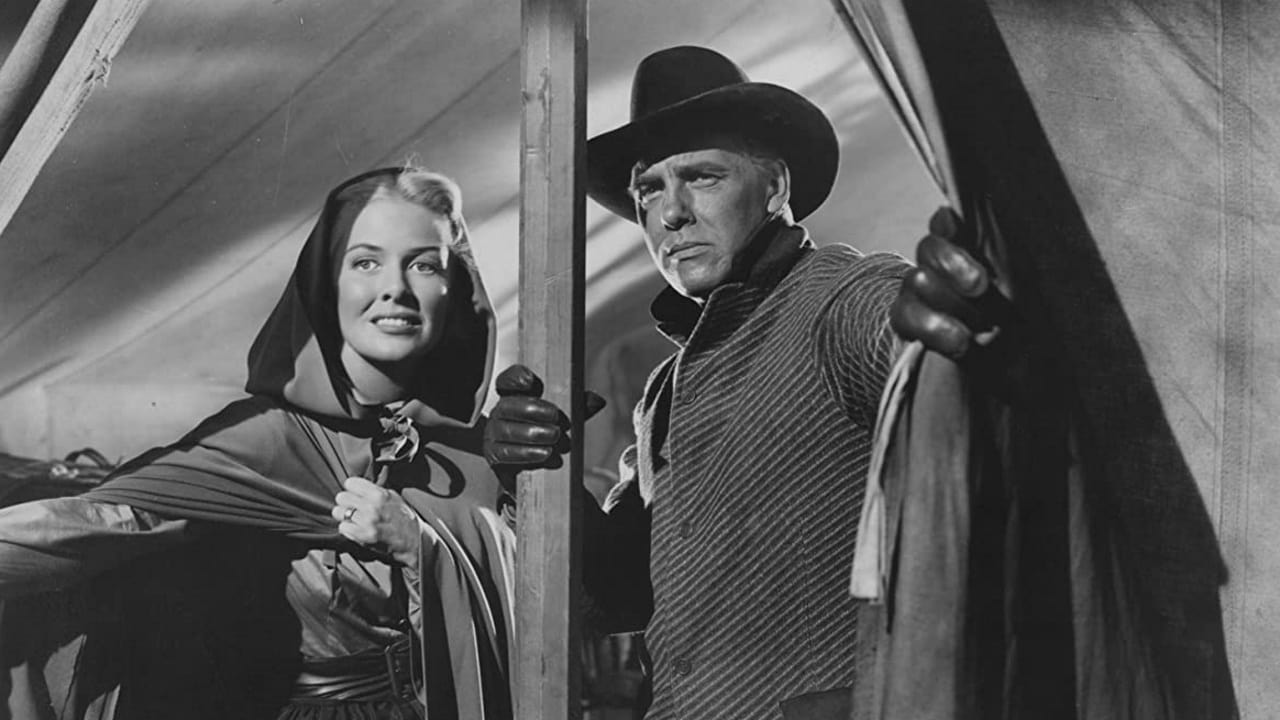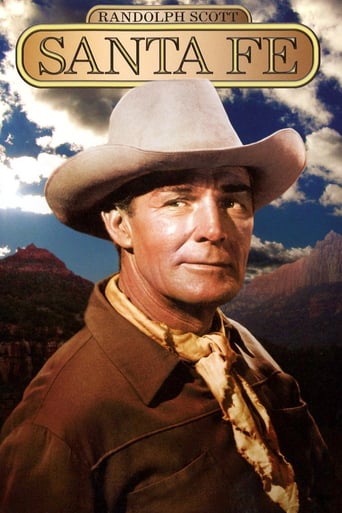

I remember that rather hilarious line from "Blazing Saddles", but I think this is the first film with Mr. Scott I've ever seen.He was kind of the poor man's John Wayne.The plot here is that the Civil War is over, and while his brothers carry around a lot of anger about what happened during the war, Randolf plays a guy who goes to work helping to organize and build railroads connecting the west with the rest of the country.Some parts of the film, like the scene with the native Americans, and they remark "Some day we'll name a train after you, Chief." (Ha, ha, "Super-chief" How funny. Almost takes the sting off the genocide!) The brothers take to train robbing after gambling doesn't work out for them, and there's a bit of pathos between the good guys and bad guys and the historical Bat Matherson being dropped into the mix.
... View MoreThe time period for this film is actually pretty common for a Randolph Scott western--and about the fourth or fifth one set just after the Civil War. Like most of the films, Randolph fought for the South and now that the war is over, he has a choice to either accept the outcome or be a whiny jerk about it. Well, he's a smart guy and soon gets a job working for the Santa Fe railroad, but his three brothers who served with him aren't so bright--they hate the North so much that they do what they can to wreck things--even though there is no reasonable reason for this. So, much of the film pits Scott against his own kin (and vice-versa) as he tries hard to get the railroad completed and they work to undo it as much as possible--working for a traveling saloon whose task, it seems, is to both make money off the workers AND get them distracted from their job.In addition to his brothers, Scott deals with a wide variety of things that might impede the progress of the railroad--rival companies, local Indian tribes and the like. This makes Scott's job in the film as a sort of trouble-shooter. How true all these problems were in the construction of the rails is beyond me and I assume that the writers took a few liberties...just a few! Overall, the film is pretty good. While it isn't among Scott's best films (they were made later in the decade and the early 60s), this is a good film from this time period.
... View MoreEnjoyed this 1951 story about the expanding of the Santa Fe Railroad through Kansas and how some Southern soldiers after the war headed North to find jobs and their leader was Randolph Scott, (Britt Canfield)and his three brothers. There plan was to make enough money in the North and head back to Virginia, however, there was still great hatred towards the Northerners for burning their property and also claiming their homestead lands. As the Santa Fe railroad is trying to lay their track across the land there is a bunch of crooks looking for their pay checks on pay day and they set up a tent with gambling, booze and hot bar maids to grab every nickle and dime and cause great delays in the building of the railroad. Janis Carter, (Judith Chandler) is a pretty platinum blonde who captures the eye of Britt Canfield, but she hates him for killing her brother in the Civil War. Great film with steam engines burning up the tracks and even an Indian takes complete control of the engine. Enjoy a great 1951 Classis Western from the past.
... View MoreI have a special liking for this film because I used to admire the Santa Fe beautiful passenger trains in the fifties and I made a fantastic trip at that time on the Santa Fe from New Mexico to Chicago. This is a colorful, entertaining film which tells the story of Randolph Scott and his brothers who were confederates and after the war is finished, get in a brawl with some nasty northern soldiers. To get away from a posse they jump into a train of the Santa Fe and Scott starts working in the building of the railroad. As his brothers become outlaws, he gets uncomfortable in his position at the railroad. Scott changes his westerns outfits quite often, I suppose because at that time the movie stills were published in a lot of magazines. A great moment is when an Indian chief complains that the train is making too much noise, so Scott allows him to drive the locomotive, to feel that he is in control. From "The Iron Horse" on, the building of the railroads was always a great theme for westerns and Santa Fe tell its story with plenty of good action scenes.
... View More